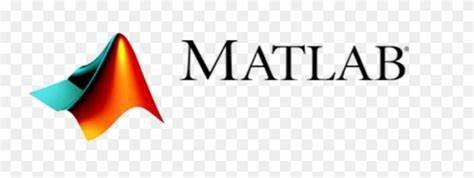In the realm of computational science and engineering, MATLAB stands as a prominent tool, offering a vast array of functionalities for numerical computation, visualization, and algorithm development. Developed by MathWorks, MATLAB has become a staple in various fields, including mathematics, engineering, finance, and beyond. Its versatility, ease of use, and extensive libraries make it indispensable for professionals and academics alike. In this comprehensive guide, we will delve into the various aspects of MATLAB, exploring its history, features, applications, and prospects.
1. Introduction to MATLAB
1.1 Historical Background
MATLAB, short for Matrix Laboratory, was created by Cleve Moler in the late 1970s as a programming tool to facilitate his teaching and research in numerical linear algebra at the University of New Mexico. Over the years, MATLAB evolved from a simple matrix calculator to a full-fledged programming language with a rich set of features.
1.2 Core Features
MATLAB\’s core strength lies in its ability to perform numerical computations efficiently. It provides a high-level programming environment that allows users to express complex mathematical operations concisely. Some of the key features of MATLAB include:
- Matrix Manipulation: MATLAB is designed to work seamlessly with matrices, making it ideal for linear algebra computations.
- Built-in Libraries: MATLAB comes with a vast collection of pre-built functions and toolboxes for various domains, such as signal processing, image processing, optimization, and statistics.
- Interactivity: MATLAB\’s interactive environment enables users to execute commands, visualize results, and debug code in real time.
- Visualization: MATLAB offers powerful plotting tools for creating 2D and 3D data visualizations, enabling users to gain insights from their results.
- Integration: MATLAB can be easily integrated with other programming languages and tools, allowing for interoperability and code reuse.
2. Getting Started with MATLAB
2.1 Installation and Setup
MATLAB is available for multiple platforms, including Windows, macOS, and Linux. Users can either purchase a license or opt for the free MATLAB Online version, which runs in a web browser. The installation process is straightforward, with step-by-step instructions provided by MathWorks.
2.2 Basic Syntax and Operations
MATLAB syntax is similar to traditional programming languages, with a focus on matrix operations. Users can perform arithmetic operations, manipulate matrices, and define functions using MATLAB\’s intuitive syntax. For example:
% Define a matrix
A = [1, 2, 3; 4, 5, 6; 7, 8, 9];
% Compute matrix multiplication
B = A * A;
% Plot a sine wave
x = linspace(0, 2*pi, 100);
y = sin(x);
plot(x, y);2.3 Working with Data
MATLAB provides various data types for representing different kinds of information, including numerical arrays, strings, and structures. Users can import data from external sources such as spreadsheets, text files, and databases, and manipulate it using MATLAB\’s built-in functions.
3. Advanced Features and Toolboxes
3.1 Toolboxes
MATLAB\’s functionality can be extended through the use of toolboxes, which are collections of specialized functions and algorithms tailored to specific application areas. Some popular toolboxes include:
- Signal Processing Toolbox: For analyzing and processing signals and audio data.
- Image Processing Toolbox: For performing image analysis and manipulation tasks.
- Optimization Toolbox: For solving optimization problems, including linear programming, nonlinear optimization, and global optimization.
- Deep Learning Toolbox: For designing, training, and deploying deep neural networks.
3.2 Simulink
Simulink is a companion product to MATLAB that enables users to model, simulate, and analyze dynamic systems using block diagrams. It is widely used in control systems engineering, mechatronics, and the automotive industry for designing and testing complex systems.
3.3 Parallel Computing
MATLAB supports parallel computing to accelerate computationally intensive tasks by leveraging multicore processors, GPUs, and distributed computing resources. Users can parallelize their code using built-in functions and constructs, such as parfor loops and spmd blocks, to improve performance and scalability.
4. Applications of MATLAB
4.1 Engineering and Science
MATLAB is extensively used in engineering disciplines such as mechanical, electrical, and aerospace engineering for modeling, simulation, and analysis. It is also widely adopted in scientific research for data analysis, computational biology, and numerical simulations.
4.2 Finance and Economics
In finance, MATLAB is utilized for quantitative modeling, risk analysis, and algorithmic trading. Its powerful numerical computing capabilities enable financial professionals to develop sophisticated models for pricing derivatives, managing portfolios, and forecasting market trends.
4.3 Academic Research and Education
MATLAB is a popular choice among academics and researchers for prototyping algorithms, conducting experiments, and teaching computational concepts. Its user-friendly interface and extensive documentation make it accessible to students and professionals alike, fostering innovation and collaboration in academia.
5. Future Directions and Trends
5.1 AI and Machine Learning
With the growing interest in artificial intelligence and machine learning, MATLAB continues to evolve with new features and toolboxes tailored to these domains. The Deep Learning Toolbox, in particular, provides a comprehensive suite of tools for building and training deep neural networks, staying abreast of the latest advancements in AI research.
5.2 Cloud Computing
MATLAB embraces cloud computing technologies to enable users to access on-demand computational resources and collaborate more effectively across distributed teams. MATLAB Online and MATLAB Drive offer cloud-based solutions for storing, sharing, and running MATLAB code seamlessly.
5.3 Interdisciplinary Applications
As the boundaries between disciplines blur, MATLAB\’s versatility makes it well-suited for interdisciplinary research and applications. Whether it\’s analyzing genomic data in bioinformatics, simulating fluid dynamics in computational physics, or optimizing supply chains in operations research, MATLAB continues to empower researchers to tackle complex challenges across diverse fields.
6. Conclusion
In conclusion, MATLAB remains at the forefront of computational tools, empowering users to solve complex problems across a wide range of domains. Its rich set of features, extensive libraries, and user-friendly interface make it an indispensable tool for professionals, academics, and students alike. As technology advances and new challenges emerge, MATLAB continues to evolve, paving the way for innovation and discovery in the years to come. Whether you\’re a seasoned engineer, a budding researcher, or an aspiring data scientist, MATLAB offers a world of possibilities for turning ideas into reality.
Resources
196383 PDFs | Review articles in MATLAB (researchgate.net)
ماتلاب – ويكيبيديا (wikipedia.org)
Internal Links (IE Thinker)
Learn more about Optimizing Processes and Efficiency: An In-Depth Look at Avix Software for Industrial Engineers [Link]
Discover more 5 Ways Simulation Applications Revolutionize Factory Operations [Link]


